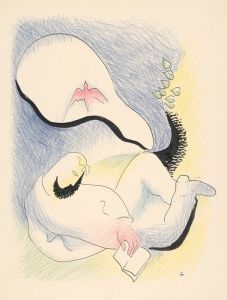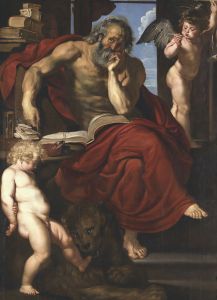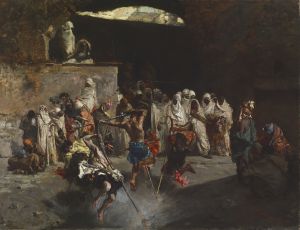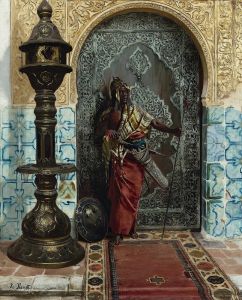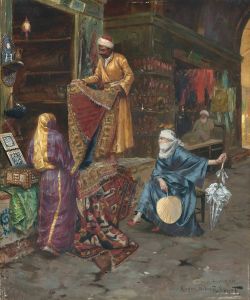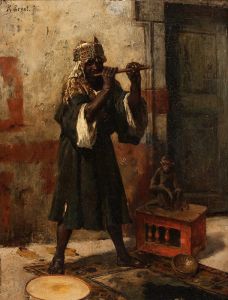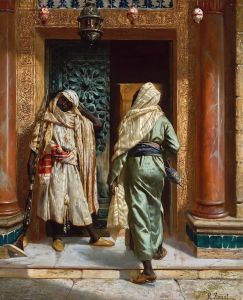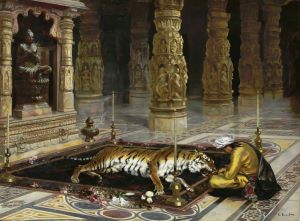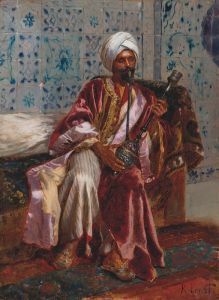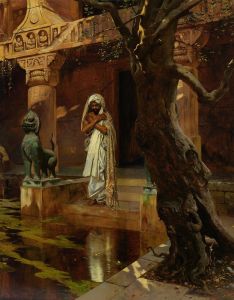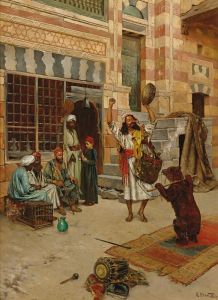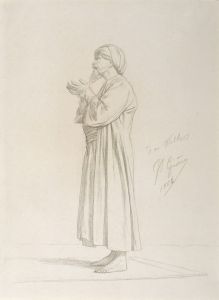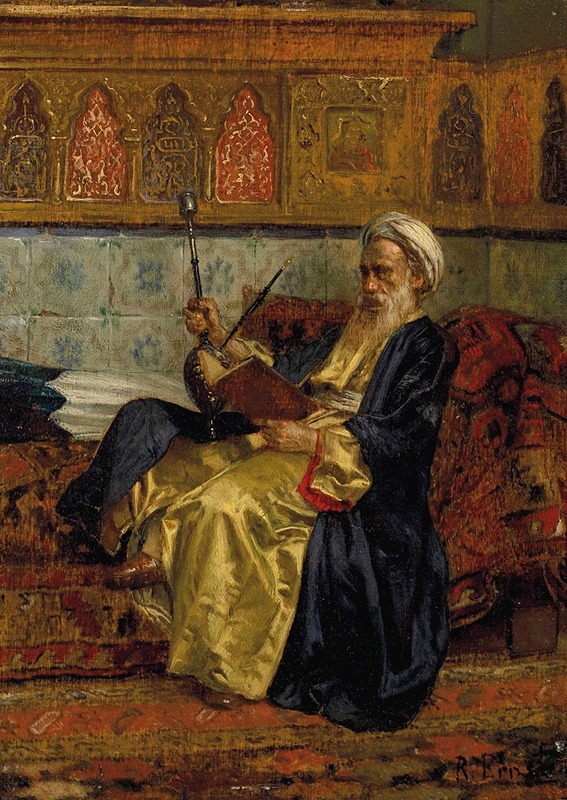
An Arab scholar
A hand-painted replica of Rudolf Ernst’s masterpiece An Arab scholar, meticulously crafted by professional artists to capture the true essence of the original. Each piece is created with museum-quality canvas and rare mineral pigments, carefully painted by experienced artists with delicate brushstrokes and rich, layered colors to perfectly recreate the texture of the original artwork. Unlike machine-printed reproductions, this hand-painted version brings the painting to life, infused with the artist’s emotions and skill in every stroke. Whether for personal collection or home decoration, it instantly elevates the artistic atmosphere of any space.
Rudolf Ernst was an Austrian painter known for his Orientalist works, which depicted scenes from the Middle East and North Africa. Born in Vienna in 1854, Ernst was part of a movement of European artists who were fascinated by the cultures and aesthetics of the Orient, a term used in the 19th century to describe the regions of the Middle East, North Africa, and parts of Asia. Ernst's works are characterized by their detailed and vibrant depictions of everyday life, architecture, and people from these regions.
"An Arab Scholar" is one of Ernst's notable paintings, capturing the essence of Orientalist art. This painting, like many of Ernst's works, reflects his interest in the scholarly and intellectual pursuits of the Arab world. The painting typically features a scholar engaged in study, surrounded by the rich and intricate decor that is characteristic of Islamic architecture and design. Ernst's attention to detail is evident in the textures of the fabrics, the intricate patterns of the tiles, and the play of light and shadow within the scene.
Ernst's work is often celebrated for its technical skill and the way it captures the beauty and complexity of the cultures he depicted. However, it is important to note that Orientalist art, including Ernst's paintings, has been critiqued for its romanticized and sometimes stereotypical portrayals of the East. These works were created during a time when European colonialism was at its height, and they often reflect the Western perspective and attitudes of the time.
Despite these critiques, Ernst's paintings remain valuable for their artistic merit and their role in the history of art. They offer a glimpse into the 19th-century European fascination with the Orient and contribute to our understanding of how cultural exchanges and perceptions were shaped during this period.
"An Arab Scholar" exemplifies Ernst's ability to blend realism with the exoticism that was popular among Orientalist artists. The painting invites viewers to appreciate the intellectual traditions of the Arab world while also reflecting on the broader context of Orientalism in art. Ernst's legacy as an Orientalist painter continues to be studied and appreciated for its artistic contributions, even as it prompts discussions about cultural representation and historical context.
Overall, Rudolf Ernst's "An Arab Scholar" is a testament to the artist's skill and the complex interplay of art, culture, and history. It remains a significant piece within the Orientalist genre, offering insights into both the artistic techniques of the time and the cultural narratives that shaped its creation.





